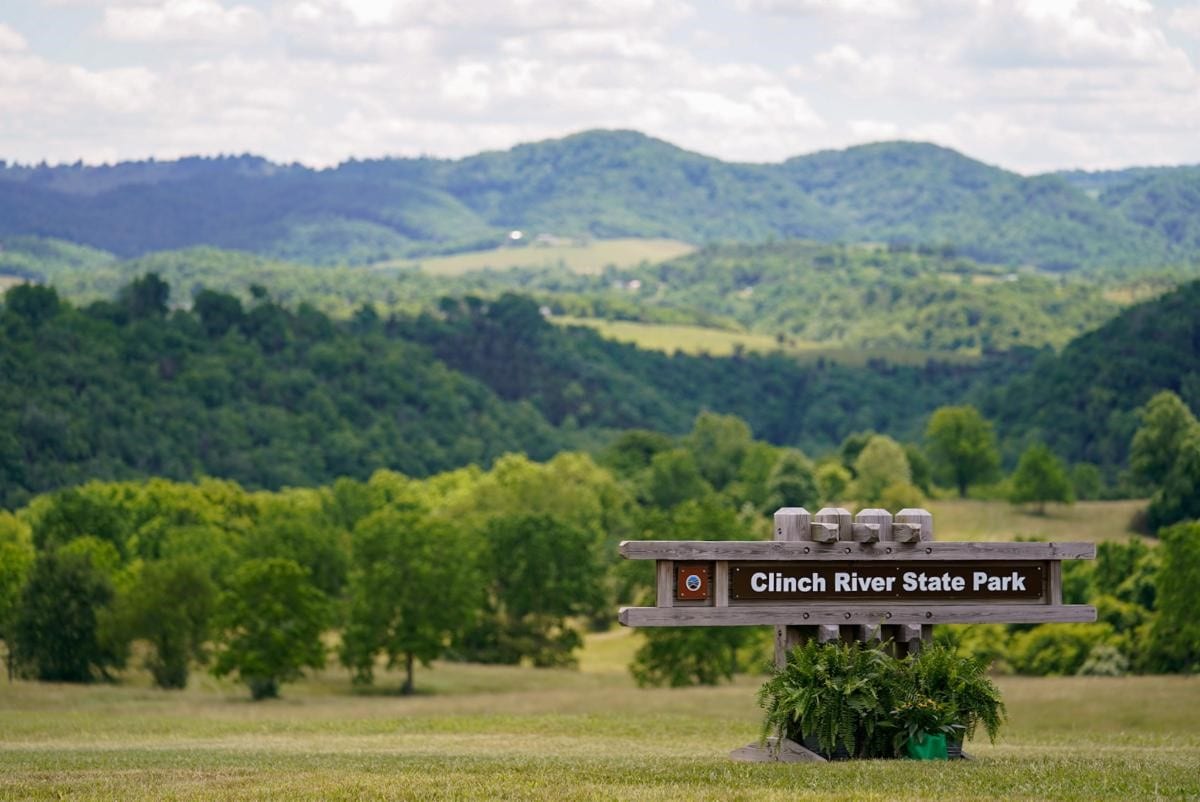
SAINT PAUL—Governor Ralph Northam recently celebrated the official opening of Clinch River State Park, Virginia’s 41st state park and first blueway state park. Consisting of 696 acres, the park is situated across several small anchor properties and connected by multiple canoe-kayak access points along a 100-mile scenic stretch of the Clinch River.
“With the dedication of Clinch River State Park, we will both protect and showcase one of the most beautiful and ecologically diverse places in our Commonwealth,” said Governor Northam. “Located in the heart of Appalachia, this park will be a highlight of the robust outdoor recreation economy in Southwest Virginia and draw even more visitors to the region. The opening of our newest state park comes as we celebrate 85 years of Virginia’s state park system and the countless opportunities that our state parks provide.”
Clinch River State Park is the first of its kind in Virginia, based around a river instead of a land mass. The anchor properties and launch points comprise a “string of pearls,” or a collection of properties that run through Tazewell, Russell, Wise, and Scott counties where outdoor enthusiasts can access the river, learn about the river’s ecological diversity, and enjoy the beauty of what The Nature Conservancy has deemed “One of the Last, Great Places.” The Clinch River blueway provides a network of multi-activity recreational trails, marked by routes on a navigable waterway with launch points, camping sites, and points of interest for canoeists, paddle boarders, and watermen.
The Clinch River is among the most productive and biodiverse waterways in the Northern Hemisphere, sustaining more than 48 vulnerable animal species, including 29 varieties of rare freshwater mussels and 19 species of fish. Rare plants, mammals and birds also thrive along the river’s edge.
“In addition to being a world-class recreation asset, the Clinch River is renowned for its biodiversity,” said Secretary of Natural Resources Matthew J. Strickler. “Clinch River State Park will play a key role in the region’s ongoing efforts to protect this ecosystem while also increasing and encouraging public use and exploration of our natural landscapes.”
“After studies that began in 2005, much research and multiple land acquisitions, six tracts of land have been brought together to form Clinch River State Park,” said Department of Conservation and Recreation Director Clyde Cristman. “A very unique park is the outcome of that work, and we look forward to seeing how it will continue to develop and serve the people and visitors of the region.”
The Wise County property known as Sugar Hill in Saint Paul currently has eight miles of hiking trails, a picnic shelter, and more than two miles of river frontage. The Sugar Hill area of the park also has significant cultural and historical attributes, as the property contains remnants of an 18th-century French settlement. Later owners farmed the land and in the 1930s created a maple syrup and sugar operation known as Sugar Hill.
Clinch River State Park allows hiking and biking on the Sugar Hill Loop Trail, while the AmeriCorps, Riverside, Hillside, Cliff, and Rock Bluff trails are hiking only. The Riverside Trail also offers access to bank fishing on the Clinch River.
“This park could not exist without the landowners who shared our vision and the efforts and partnerships of the communities along the Clinch River,” said Virginia State Parks Director Dr. Melissa Baker. “As visitors from all over come to hike, fish, and float the river, it is our hope that they will also explore the local communities and discover what makes this region so special.”
Photos from the dedication and ribbon cutting ceremony can be found below and video is available here.
Virginia State Parks are a division of the Department of Conservation and Recreation (DCR). DCR will develop a master plan with the public input to guide any future facilities and amenities at the park. To learn more about Virginia State Parks, visit virginiastateparks.gov.
